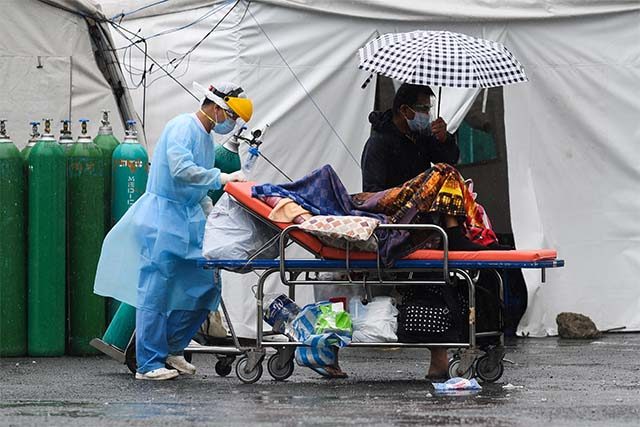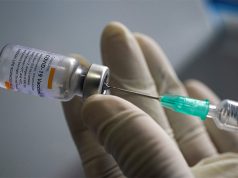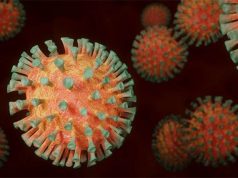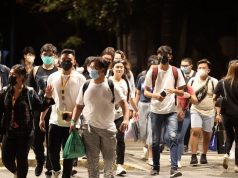
A Pennsylvania-based doctor issued suggestions on how health systems can adapt to the surge in COVID-19 cases fueled by the Omicron variant.
The Omicron variant has already been detected in many parts of the world, including the Philippines.
The doctor named Mucio Kit Delgado shared on January 3 his observations on the COVID-19 cases at the emergency department of Penn Presbyterian Medical Center, a hospital in Pennsylvania he was attending in.
Delgado initially observed fewer hospitalizations among patients who tested positive for COVID-19. Still, he said health care systems are exhausted due to the rising cases.
“Good news: Aside from a few patients with compromised immune systems, didn’t have to hospitalize anyone who was vaxxed/boosted,” he said.
“Bad news: Health systems are stressed to the max. We need to adapt…quickly,” he added.
Some thoughts from seeing a ton of Covid in the ER this week
Good news: Aside from a few patients with compromised immune systems, didn’t have to hospitalize anyone who was vaxxed/boosted
Bad news: Health systems are stressed to the max
We need to adapt…quickly
Thread👇
— M. Kit Delgado, MD, MS (@kit_delgadoMD) January 3, 2022
Delgado also further described the different situations between those who were vaccinated without receiving booster shots and those who have not been vaccinated at all.
“Vaxxed/unboosted? Tons of patients like this: wiped out, dehydrated, febrile. If they were older (eg > 55 yo or had other medical problems) often had to admit for overnight IV hydration and supportive care. But usually go home within a day or two,” he said.
“Unvaxxed: These are the folks that get sick and had to be hospitalized because they need oxygen, some even younger than me,” he added.
Delgado pointed out that ramping up vaccination rates is good, but not enough for overall health care.
“Health and social systems need to seriously adapt and quickly, or our ability to provide health care will be seriously compromised,” he said.
Tips from a fellow doctor
Based on his observations, Delgado made the following suggestions:
- Set up separate clinics for COVID-19 testing and flu-like illnesses outside the ER (emergency room) units. This is to “divert low severity patients from ERs to more convenient care and allow ERs to focus on non-COVID and COVID emergency care.”
…So what can health systems do over the next 4-6 weeks to deal with the surge?
1) Set up Covid testing and flu like illness clinics outside the ER to divert low severity patients from ERs to more convenient care and allow ERs to focus on non Covid and Covid emergency care…
— M. Kit Delgado, MD, MS (@kit_delgadoMD) January 3, 2022
- Assign or triage infected patients with less severe symptoms to dedicated COVID-19 observation units.
He also suggested assigning a hospitalist physician in the ER to help optimize care for patients who are waiting to be admitted.
“By the time a bed opens up 24-48 hours later, the patient may be ready to be discharged from the ER,” Delgado said.
…2) Optimize care pathways in the hospital. We have shown the benefits of triaging lower severity patients (who are now the majority of hospitalizations) to dedicated Covid observation units. Better care, less time in the hospital. See article below…https://t.co/3sorBeIjWi
— M. Kit Delgado, MD, MS (@kit_delgadoMD) January 3, 2022
- Providers of other types of health care should start preparing their health workers and facilities in case their patients get infected with COVID-19.
These include “dialysis centers, behavioral health treatment providers, and long-term care providers.”
“Decreased access to care will worsen outcomes and with staff in these facilities almost universally vaccinated and everyone wearing masks, the risks from Covid are no worse than any other aspect of society (family gatherings, public transportation, shopping, dining, bars, etc),” the doctor said.
…3) Dialysis centers, behavioral health treatment providers, and long term care providers need to adapt to the reality that a huge proportion of patients who need their care will incidentally test positive for Covid. Decreased access to care will worsen outcomes, and…
— M. Kit Delgado, MD, MS (@kit_delgadoMD) January 3, 2022
- Delgado suggested implementing a “low-tech text-message based monitoring program” wherein patients who test positive at home can quarantine where they are and get to the hospital in time should their conditions worsen.
…4) Finally, implementing a low-tech text-message based monitoring program can help the millions of patients who will test positive stay safe at home and get to the hospital at the right time if they get sick. See our work below…https://t.co/KRF0S96bab
— M. Kit Delgado, MD, MS (@kit_delgadoMD) January 3, 2022
The situation in the Philippines
The Department of Health had previously confirmed local cases of the Omicron variant of COVID-19 in the country.
In an interview last January 3, Health Undersecretary Leopoldo Vega, the country’s treatment czar,remained confident that the country is “ready” for an Omicron wave.
“Our numbers have doubled and this is the start and we are very sure that this will peak. When it will crest down and decelerate, we don’t know. But what is very important is that we are prepared for this omicron virus,” Vega said.
Metro Manila and other surrounding provinces are also now placed under Alert Level 3 amid the spikes in COVID-19 infections until January 15.
The country recorded 10,755 new COVID-19 cases on Wednesday, January 5. It is the highest jump since October 10 last year.









